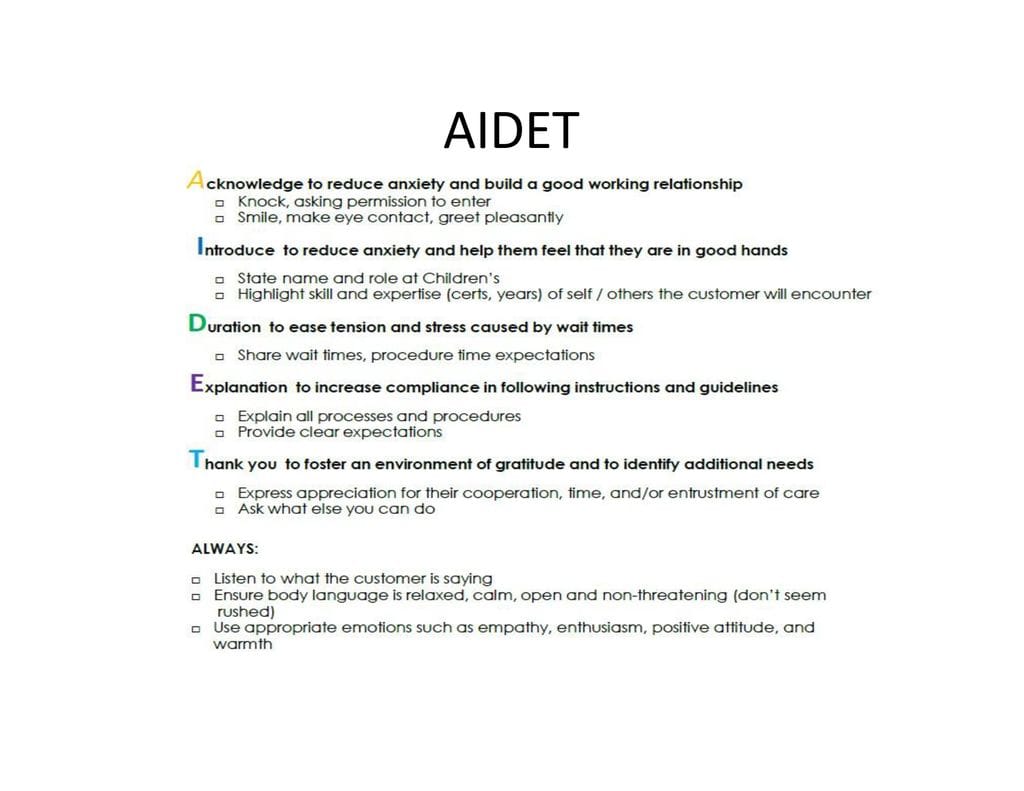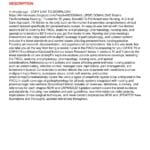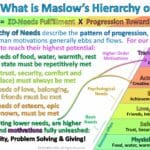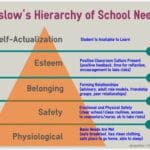Imagine stepping into a doctor’s office, feeling a wave of anxiety wash over you. Now, envision a nurse who greets you with a warm smile, introduces themselves clearly, and patiently explains what to expect. That’s the transformative power of AIDET, a simple yet profound approach that can reshape patient interactions and ultimately, improve care outcomes. It’s not merely a technique; it’s a philosophy that places the patient at the heart of every interaction.
Understanding AIDET: A Foundation for Patient-Centered Care
AIDET, an evidence-based acronym, stands for Acknowledge, Introduce, Duration, Explain, and Thank You. These five elements provide a framework for communication that can significantly impact a patient’s healthcare experience. It aims to decrease patient anxiety, increase patient compliance, and improve clinical outcomes by fostering clear, respectful, and empathetic communication. It also seeks to cultivate trust and rapport between healthcare professionals and the individuals they serve. Studies suggest that AIDET contributes to increased patient satisfaction, improved HCAHPS scores, and potentially a reduction in medical errors due to enhanced communication, while also fostering a more positive work environment for nurses.
Decoding the Elements of AIDET: Practical Applications
Let’s delve deeper into each component of AIDET, exploring its practical application in various nursing scenarios:
Acknowledge: Making the First Connection
More than a simple “hello,” acknowledging a patient involves truly seeing them as an individual. A warm smile, genuine greeting, making eye contact, and using the patient’s preferred name can establish a connection and foster comfort. It’s about recognizing their presence and setting a positive tone. This initial acknowledgment can be especially crucial for patients experiencing heightened anxiety or vulnerability.
Introduce: Building Trust and Transparency
Introducing yourself clearly, stating your role, and briefly explaining your qualifications related to the patient’s care helps build trust and confidence. For example, “Hello Mr. Jones, I’m Sarah, your registered nurse for today. I’ve been working in cardiology for five years.” This transparency empowers patients and allows them to understand who is involved in their care.
Duration: Managing Expectations and Reducing Uncertainty
Providing realistic time estimates for procedures, tests, or waiting times can significantly alleviate anxiety related to the unknown. For instance, “The doctor will likely be with you in about 15 minutes, Mr. Jones. In the meantime, is there anything I can get for you?” While unforeseen delays can occur, providing an estimated timeframe helps manage expectations and empowers patients with a sense of control.
Explain: Empowering Patients Through Knowledge
Explaining procedures, treatments, and next steps in clear, simple language, while avoiding medical jargon, is essential for patient understanding and participation. Encouraging questions and ensuring the patient comprehends what to expect fosters a collaborative environment. This might involve describing what a medication does, outlining what to expect after surgery, or clarifying post-procedure instructions. Have you ever wondered about an effective way to manage an unstageable pressure injury? Or are you curious about the process of afjis? Clear explanations related to these processes can be invaluable.
Thank You: Expressing Gratitude and Reinforcing Value
Expressing sincere gratitude to the patient for their trust and cooperation reinforces the importance of the patient-provider relationship. A simple “Thank you for your patience, Mr. Jones,” or “Thank you for choosing our hospital” can leave a lasting positive impression and reinforce the patient’s value within the healthcare setting.
Reaping the Rewards: Benefits of AIDET for Patients and Nurses
The positive effects of AIDET ripple outward, benefiting both patients and nurses:
Patient Perspective: A More Humanized Experience
From a patient’s perspective, AIDET can lead to reduced anxiety, increased comfort and trust, a deeper understanding of procedures, and greater participation in their own care. Knowing what to expect and feeling heard can significantly impact a patient’s overall experience, contributing to a sense of empowerment and control.
Nurse Perspective: Cultivating a Positive Work Environment
For nurses, implementing AIDET can improve job satisfaction, potentially reduce stress and burnout, foster stronger patient relationships, and enhance their professional image. When nurses feel they are communicating effectively and making a genuine difference, it can positively impact their overall well-being and professional fulfillment.
Integrating AIDET into Practice: Tips for Success
While the principles of AIDET are straightforward, effectively implementing them requires conscious effort and continuous practice:
- Prioritize Key Information: In busy healthcare settings, prioritize the most crucial information to convey during brief interactions.
- Embrace Empathy: Avoid scripted interactions; genuinely connect with each patient, acknowledging their individual needs and concerns.
- Practice and Refine: Role-playing and simulations can be valuable tools for enhancing communication skills and fostering teamwork.
- Adapt and Tailor: Recognize that each patient interaction is unique. Adapt AIDET to accommodate individual patient needs, preferences, and communication styles.
Expanding the Reach of AIDET: Untapped Potential
The potential applications of AIDET extend beyond traditional settings. It can be adapted for various populations and integrated into evolving models of care, including telehealth and virtual care platforms, interprofessional communication among healthcare teams, and communication with vulnerable patient populations facing cognitive impairments or language barriers.
The Future of AIDET: Ongoing Research and Exploration
While research suggests AIDET’s positive impact, ongoing studies continue to examine its effectiveness across diverse patient populations and healthcare settings. Some experts believe further integrating AIDET principles into electronic health records and other technologies could enhance its impact. Exploring its adaptation for specific medical specialties and complex care situations is also of growing interest. It’s important to note that while AIDET offers a robust framework, it isn’t a panacea for all communication challenges. Ongoing research will likely refine our understanding of its benefits and limitations.
AIDET is more than just an acronym; it’s a commitment to compassionate, patient-centered care. It recognizes that effective communication is not simply about transmitting information; it’s about building connections, empowering patients, and creating a healing environment. By embracing AIDET, nurses can truly transform patient interactions and improve outcomes, one conversation at a time.
- China II Review: Delicious Food & Speedy Service - April 17, 2025
- Understand Virginia’s Flag: History & Debate - April 17, 2025
- Explore Long Island’s Map: Unique Regions & Insights - April 17, 2025
















